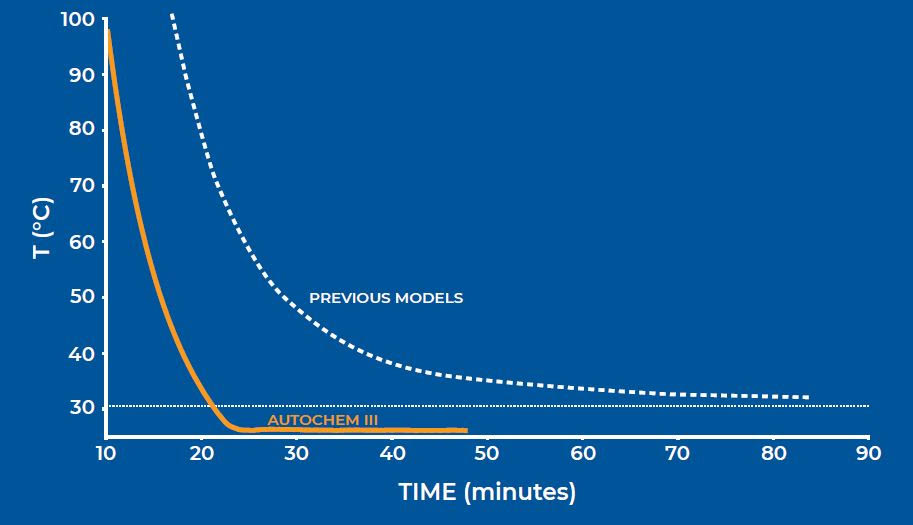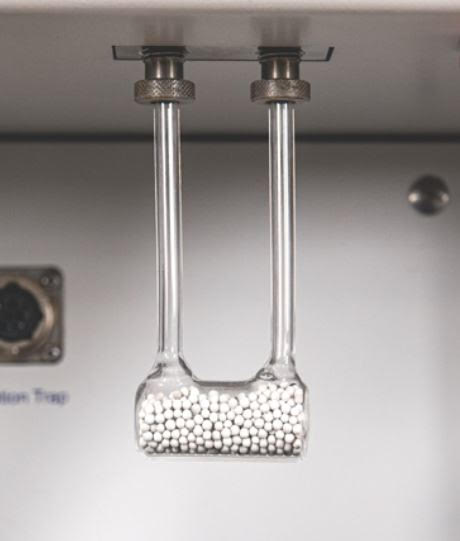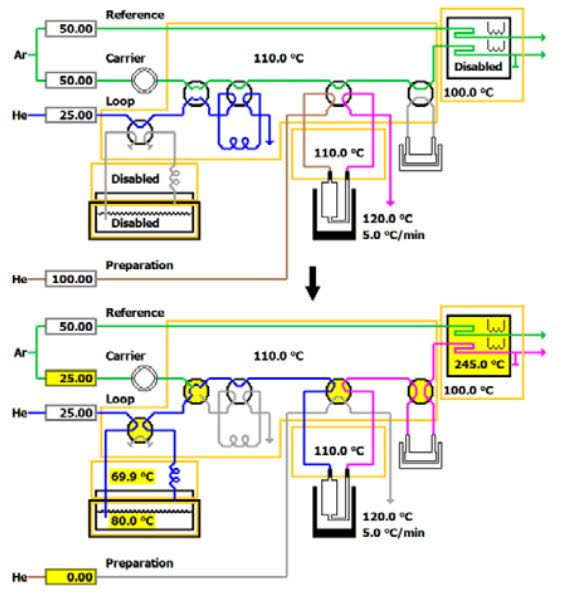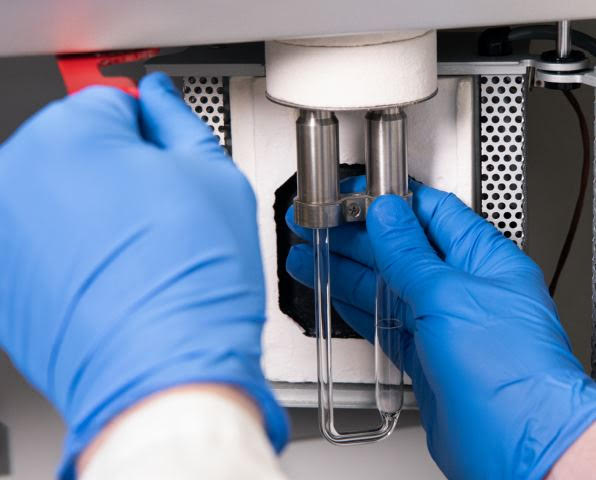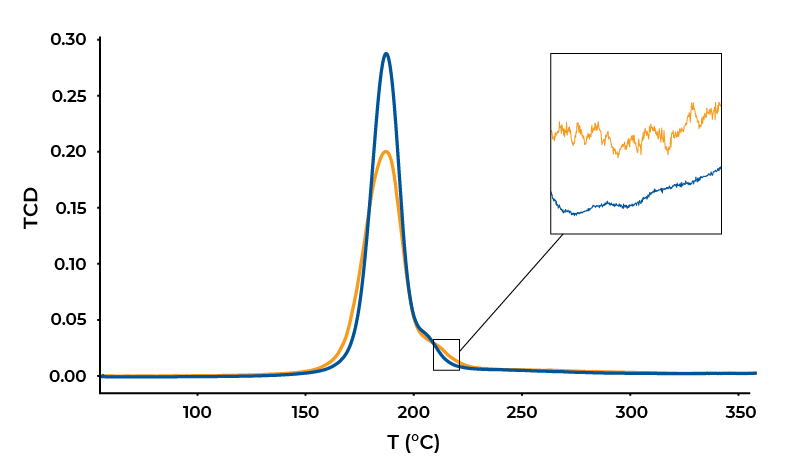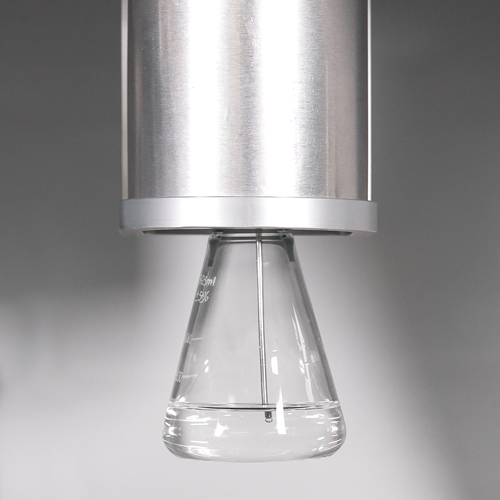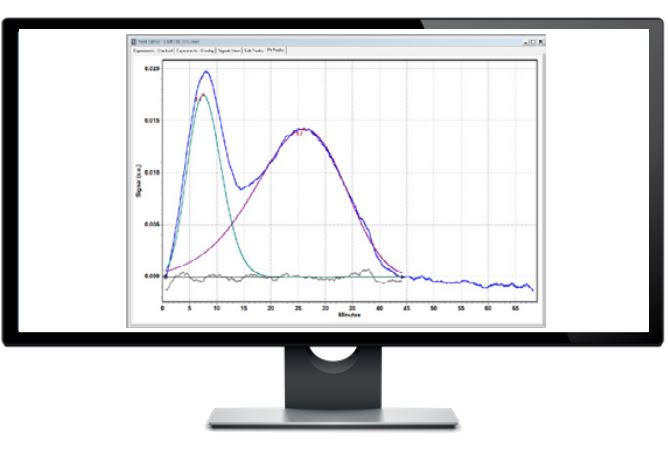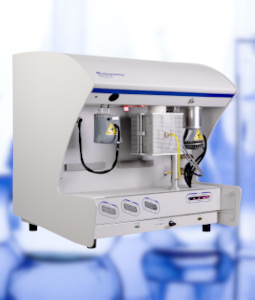
Autochem III
A Catalyst Characterization Laboratory in a Single Analytical Instrument
- ▪ Industry-leading accuracy through superior sample and gas temperature control, patented gas blending, and 100% sensor sensitivity improvement
- ▪ Save hours per day with rapid cooling, a non-cryogenic moisture trap for TPR, and the most available pre-plumbed gas streams
- ▪ Enhance operator safety by operating without glass vacuum dewars, cryogenic liquids, or complicated operations with hot fittings
Automated Catalyst Characterization System
The AutoChem II 2920 is a fully automated chemisorption analyzer that can provide your laboratory with the ability to conduct a comprehensive array of highly precise studies of chemical adsorption and temperature-programmed reactions. With this single instrument, you can acquire valuable information about the physical properties of your catalyst, catalyst support, or other materials. It can determine catalytic properties such as percent of metal dispersion, active metal surface area, acid strength, surface acidity, distribution of strength of active sites, BET surface area, and more. The AutoChem II 2920 performs pulse chemisorption, temperature-programmed reduction (TPR), desorption (TPD), oxidation (TPO), and reaction analyses and does it automatically.
A catalyst characterization laboratory enclosed in one cabinet.
The AutoChem II 2920 is a fully automated chemisorption analyzer that can provide your laboratory with the ability to conduct a comprehensive array of highly precise studies of chemical adsorption and temperature-programmed reactions. With this single instrument, you can acquire valuable information about the physical properties of your catalyst, catalyst support, or other materials. It can determine catalytic properties such as percent of metal dispersion, active metal surface area, acid strength, surface acidity, distribution of strength of active sites, BET surface area, and more. The AutoChem II 2920 performs pulse chemisorption, temperature-programmed reduction (TPR), desorption (TPD), oxidation (TPO), and reaction analyses and does it automatically.
This unit is also available in a Corrosion Resistant version.
Features
Wide Variety of Features and Benefits
Optimum design and efficient utilization of catalysts require a thorough understanding of the surface structure and surface chemistry of the catalytic material. Chemical adsorption (chemisorption) analyses can provide much of the information needed to evaluate catalyst materials in the design and production phases, as well as after a period of use. The chemical adsorption isotherm reveals information about the active surface of a material and has been employed for many years as a standard analytical tool for the evaluation of catalysts. In addition, temperature-programmed reaction techniques have emerged as an indispensable companion to chemisorption isotherm analyses in many areas of industry and research.
- Four internal temperature-controlled zones can be heated independently up to 150 °C. This prevents condensation in the flow path and allows studies to be performed with vapors.
- Low internal plumbing volume assures high resolution, fast detector response, and reduces error when calculating gas volumes.
- Highly sensitive linear thermal conductivity detector (TCD) assures the calibration volume remains constant over the full range of peak amplitudes so the area under the peak is directly proportional to the volume of gas reacted.
- Four high-precision mass flow controllers provide extremely accurate, programmable gas control. This assures a stable baseline and accurate determination of gas volumes.
- Corrosion-resistant detector filaments are compatible with most destructive gases and reduce the likelihood of filament oxidation.
- Clamshell furnace can heat the quartz sample reactor to 1100 °C. Any number of ramp rates and sequences facilitate customized experiments. The KwikCool feature cools the furnace temperature rapidly down to near ambient, reducing analysis time and increasing throughput.
- 18 total gas inlets six each for preparation, carrier, and loop gases permit sequential experiments of different types and saves time between experiments
- Mass spectrometer port and software integration allows virtually simultaneous detection on both the thermal conductivity detector and mass spectrometer.
- Optional Vapor Generator permits analysis using vaporized liquids in an inert carrier stream.
- Optional CryoCooler enables the start of an analysis at sub-ambient temperature
